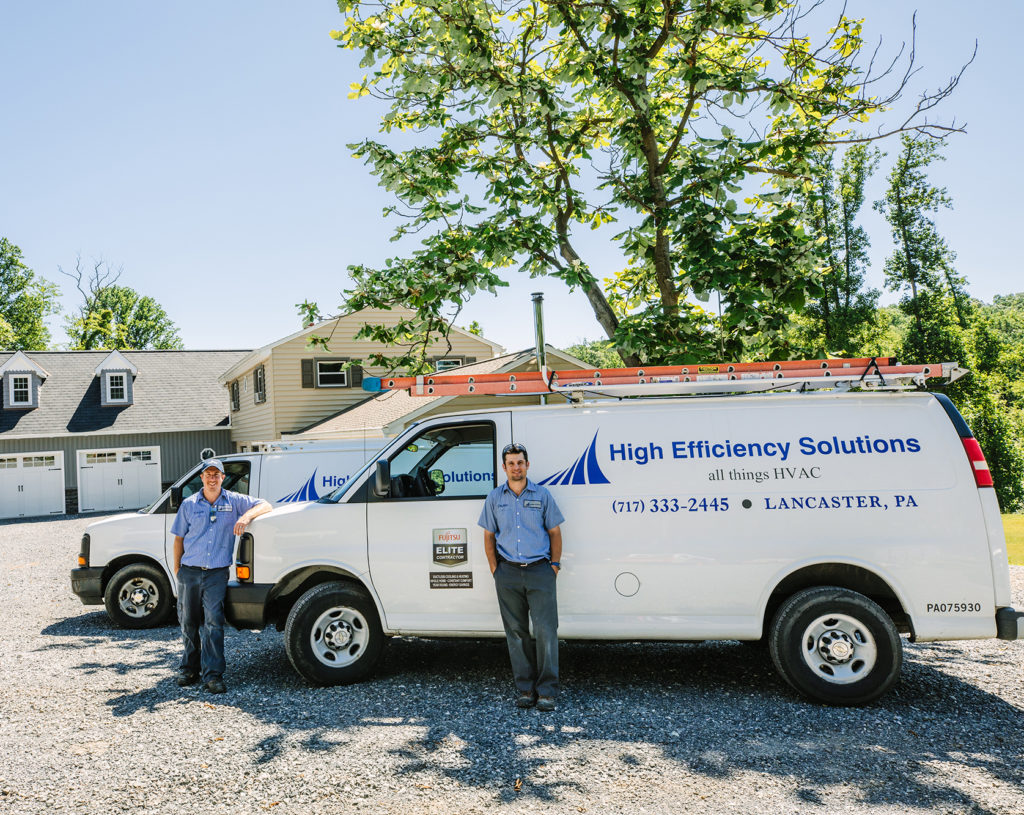A strong economy over the past year has been a blessing for most businesses, though for many HVAC contractors there have been times that it has felt like a curse.
New construction and renovations are up. Homeowner confidence is high, creating a surplus of replacement work, too. But the manpower challenge still exists: too much work and too few workers.
“I’m in the same boat as everyone else. The work is there but the skilled manpower is not,” said Dustin Ebersole, owner of High Efficiency Solutions, a full service mechanical contracting firm in Lancaster, PA. “I’m hiring. All of my competitors are hiring. Everyone employable is already employed, and none of us can keep up with the work.”
Ebersole explained that he uses two methods to find new employees, aside from word of mouth and truck magnets that read “Hiring.”
“I’m pretty picky,” he said. “I have to be. So I keep a list of technicians that I’ve worked with in the past, and would like to work with again. I call those guys once a year or so and ask them if they’re happy where they’re currently employed. I respect loyalty, and it’s a trait I want in my own crew, so I’m never pushy. But if a guy is unhappy where he’s at and actively looking to make a change, I want him to know I’m hiring.”
Recently, Ebersole began using a service called BizPal. The recruiting service streamlines and automates a big portion of the recruiting work, from social media placements and job boards to pre-qualifying job applicants and more. But, it does require an investment.
The Shift Towards Hiring Green
“Despite all this, we still can’t hire fast enough,” said Ebersole. “That, in part, has been the reason I’ve begun to hire green employees. If we can’t find trained technicians, I’ll train them myself.”
Halfway through 2018, Ebersole interviewed a recent high school graduate, Ryan McKee. McKee didn’t have any Vo-Tech training or construction experience, but he wanted to learn, and possessed a few other traits Ebersole was looking for.
“I look for punctuality, good people skills, work ethic and hopefully, the desire to make a career of this,” said Ebersole. “Ryan beat me to the interview; punctuality, check. He wrestled in high school and has worked since he was 15; that’s a good indication of work ethic. He shook my hand and made eye contact when we met.”
The big unknown for any contractor on the brink of investing a bunch of time into a green hire is whether or not they’ll stay. Ryan spent $500 on tools after his second week on the job, so that shows some level of commitment. But Ebersole thinks that the advantages of hiring a green employee outweigh the risk.
Worth the Investment
“Sure, a green hire won’t go out and make you a bunch of money as soon as they start,” said Ebersole. “It could a long time before it becomes profitable. But in my experience, it’s worth the effort.”
According to Ebersole, green employees don’t bring bad habits with them, at least not as it relates to HVAC work specifically. They’re also easier to find and less costly to hire than trained techs. Younger employees also tend to be energetic and motivated.
McKee is High Efficiency Solutions’ second green hire. Last time, the company hired Tim Freeman, who is still with the company. Freeman had some electrical and general construction experience, but no mechanical knowledge.

Above (L-R): Green hire Tim Freeman and Dustin Ebersole, owner of High Efficiency Solutions.
“Hiring and training Tim went better than anyone could hope when recruiting someone new to the industry,” said Ebersole. “He’s been with us three years now, and he started the same way Ryan did… by putting ductwork together.”
Freeman began to braze and solder shortly after starting. A year or so went by and he enrolled in evening refrigerant courses, some of which were taught by Ebersole at the local Tech School. He got his refrigerant license, and kept learning.
“Tim eventually covered on-call service for me one weekend,” said Ebersole. “I helped him over the phone as needed. He now has his own van, and the rest is history.”
As good as his experience with hiring green employees has been, Ebersole admits that is not the magic bullet to his workforce challenges. He wants the company to grow at a rate of one employee per year. So green hires can only account for a portion of the growth.
“Training takes time and I’m not willing to sacrifice quality,” said Ebersole. “Growing the company is a marathon, not a race. As we hire and train young, inexperienced people, I’ll hope they recognize that we took a chance on them. Maybe that will translate to loyalty, and the beginning of a long-standing relationship.

